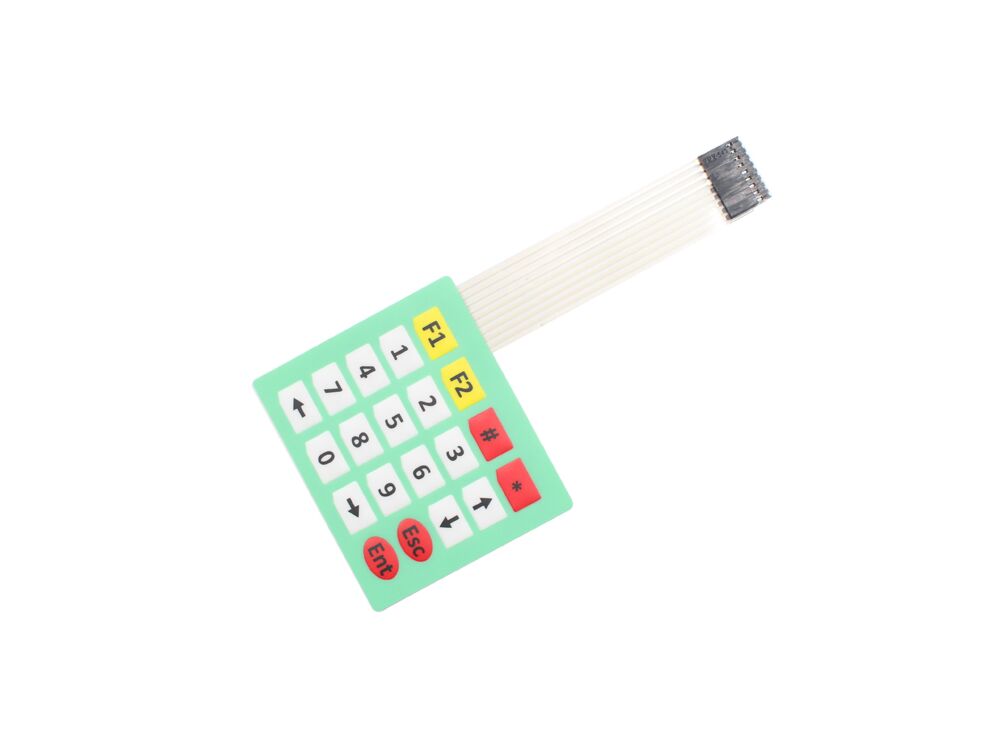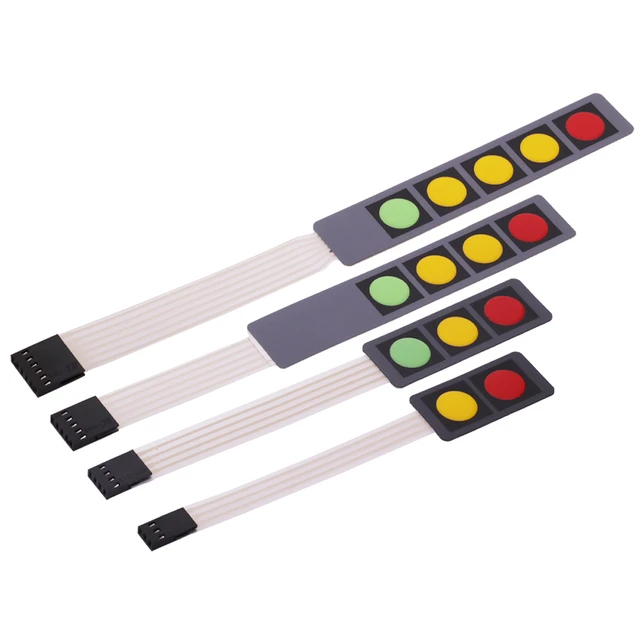Why Membrane Switches are Ideal for Durability and Performance
Why Membrane Switches are Ideal for Durability and Performance
Blog Article
Comprehending Membrane Layer Changes: The Secret to Reliable and sturdy Controls

What Are Membrane Switches?
Membrane layer switches are an advanced remedy in the world of interface technology, combining functionality and style perfectly. These devices act as an interface between customers and electronic systems, integrating several elements right into a small format. Typically constructed from versatile, slim layers of products, membrane buttons are developed to react to touch, enabling individuals to interact with machinery and electronic devices successfully.
The key elements of a membrane switch include a printed circuit layer, graphic overlay, and a spacer layer that protects against unintended activation. The graphic overlay can be customized to show brand name identity or customer choices, improving visual appeals while guaranteeing functionality. Membrane buttons are generally utilized in different applications, consisting of clinical gadgets, customer electronics, and commercial equipment, owing to their durability and resistance to ecological variables such as wetness and dirt.
Among the essential advantages of membrane layer buttons is their capacity to hold up against damage, making them perfect for high-traffic environments. Additionally, they are lightweight and call for very little space, permitting for innovative layouts in product development. On the whole, membrane layer switches stand for a sensible and reliable option for contemporary digital user interfaces, weding technology with user-centric style concepts.
How Membrane Layer Switches Over Job
The operation of membrane changes joints on a simple yet efficient system that equates user input right into digital signals. When a customer presses the button, the top layer flaws, enabling a conductive component in the circuit layer to make call with a matching conductive pad on the bottom of the graphic overlay.
The layout of membrane layer switches can vary, yet they frequently incorporate domes or tactile components to offer comments to the customer, boosting the overall experience - membrane switch. The products made use of in membrane layer buttons, such as polyester or polycarbonate, add to their sturdiness and resistance to ecological factors, consisting of dampness and dirt. In addition, the published circuits are generally encapsulated, which safeguards them from deterioration with time.
Benefits of Membrane Switches

Additionally, membrane switches are known for their sturdiness. Constructed from robust products, they are immune to dirt, wetness, and physical wear, which dramatically extends their life-span contrasted to traditional mechanical switches. This resilience makes them particularly ideal for high-traffic atmospheres and applications calling for long life.
An additional significant advantage is the simplicity of cleaning and maintenance. The smooth surface of membrane switches minimizes dust buildup and is frequently unsusceptible spills, making them ideal for settings that need regular sanitization.
In addition, membrane layer switches provide a streamlined profile, leading to a thinner style that can be incorporated right into different devices without adding mass. This function not just boosts the aesthetic charm but additionally adds to a more ergonomic product design.
Applications of Membrane Layer Switches
Flexible and easy to use, membrane layer switches locate get redirected here applications across a wide variety page of industries, including medical devices, consumer electronics, and commercial tools. In the medical area, these switches are indispensable to gadgets such as analysis equipment, person monitoring systems, and infusion pumps, where integrity and convenience of cleansing are important. Their ability to keep and withstand harsh environments performance makes them excellent for such applications.

In customer electronics, membrane layer switches are used in products like microwaves, cleaning equipments, and push-button controls - membrane switch. Their sleek design permits instinctive individual interfaces, boosting the general customer experience while providing longevity and resistance to wear and tear
Industrial devices also benefits from membrane layer switches, specifically in control panels for machinery and automation systems. These switches supply defense against dust and dampness, ensuring consistent performance in difficult environments. Furthermore, their customizable features permit makers to tailor them to specific operational requirements, boosting performance and performance.
Choosing the Right Membrane Layer Change
When choosing a membrane layer switch, it is important to consider various aspects that influence performance and viability for specific applications. The primary factors to consider consist of environmental conditions, responsive responses, toughness, and design specifications.
First, evaluate the operating setting; buttons exposed to moisture, chemicals, or severe temperature levels call for details products to guarantee longevity and performance. Next, evaluate the demand for tactile responses. Depending on user communication, some applications may profit from a responsive feedback to validate activation, while others may favor a non-tactile design for aesthetic factors.
Sturdiness is an additional critical element; membrane buttons should be developed to endure constant use, impacts, useful content and abrasion. Guarantee the picked switch can endure the anticipated lifecycle, specifically in high-usage situations.

Verdict
In conclusion, membrane layer changes serve as vital parts in the style of sturdy and reputable control systems across numerous sectors. The flexibility of membrane layer switches over enables for tailored remedies that satisfy certain operational requirements, reinforcing their significance in contemporary innovation.
Membrane layer switches over stand for a critical aspect of modern-day user interface layout, blending capability with durability in different applications.Membrane buttons are an innovative option in the realm of customer interface innovation, integrating capability and design perfectly. Commonly constructed from flexible, slim layers of products, membrane switches are created to respond to touch, allowing individuals to communicate with machinery and electronic tools successfully.
The layout of membrane buttons can differ, but they usually include domes or tactile elements to offer comments to the individual, enhancing the general experience.In verdict, membrane layer switches offer as necessary components in the style of trusted and resilient control systems throughout different sectors.
Report this page